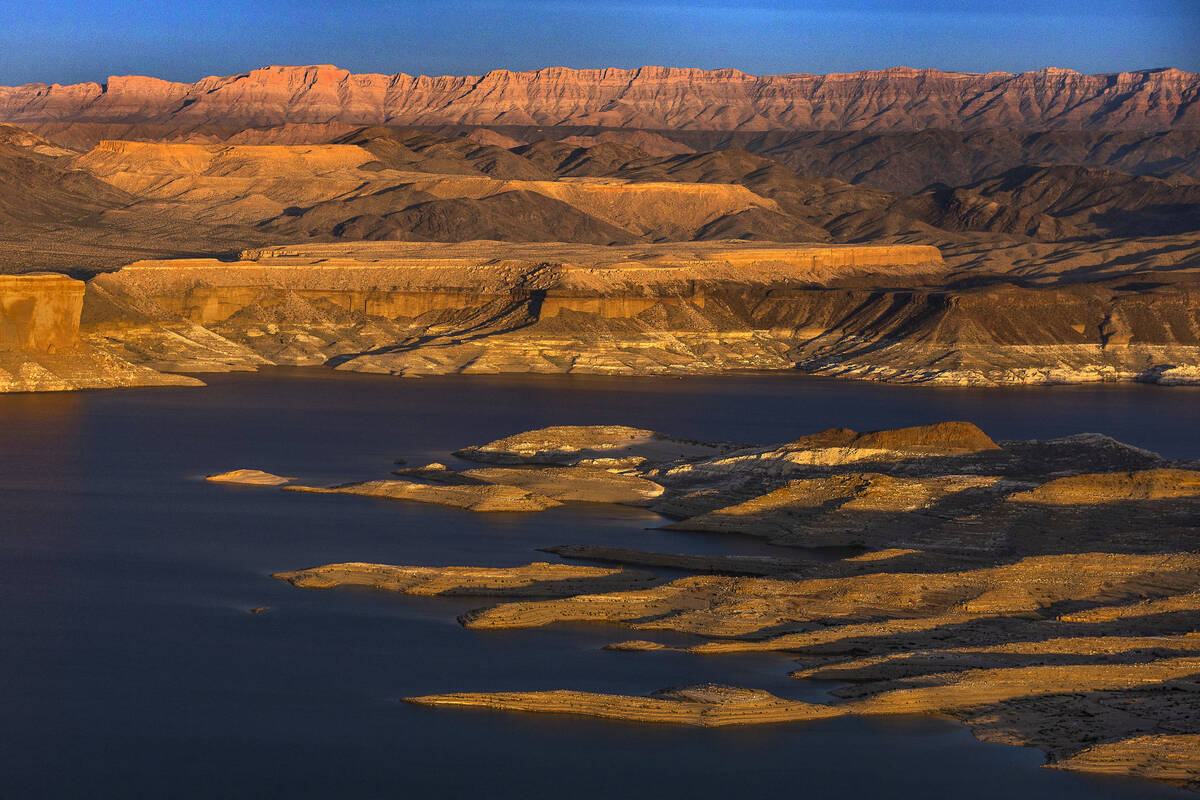Lake Mead projected to rise more than 20 feet after wet winter
Lake Mead is projected to see a substantial rise this summer, as near-record snowpack melts off and finds its way into the Colorado River system and gives the reservoir a much-needed boost.
After dropping more than 50 feet since 2020, Lake Mead is now expected to rise by roughly 22 feet by the end of the year, according to the latest forecasts released Thursday by the Bureau of Reclamation.
The hefty winter snowpack and projected runoff will allow the bureau to release 2.5 million acre-feet more water than initially planned from Lake Powell to Lake Mead during the current water year, which runs from Oct. 1 to Sept. 30.
The added water from those releases will boost Lake Mead to roughly 1,068 feet by December. If those projections hold true, it would be just the fourth time since 2000 that the reservoir east of Las Vegas ended the year higher than it started.
The Las Vegas Valley gets about 90 percent of its water from Lake Mead, which sits at roughly 29 percent of its full capacity.
Since the start of the drought along the Colorado River basin at the turn of the century, Lake Mead has fallen more than 170 feet. While the rising levels would bring a welcome reprieve to the system, the forecasted levels would still keep Lake Mead under a federal water shortage declaration.
“Certainly it has been an unprecedented winter, and the information that the Bureau of Reclamation released demonstrates that we’re going to see gains in Lake Mead’s elevation throughout the next year. Now, one good winter does not negate the 20 years of drought conditions, but it is certainly a welcomed change,” Southern Nevada Water Authority spokesman Bronson Mack said Thursday.
The Bureau of Reclamation had planned to cap releases from Lake Powell at 7 million acre-feet this year as a way of buoying the reservoir, which had fallen below 25 percent capacity in recent years and teetered near levels that raised worries over how long Glen Canyon Dam could continue to generate hydropower.
With this year’s winter snowpack in the Upper Colorado River Basin, which ranks as the second-wettest since 2000, the bureau said Thursday that it would up those releases to 9.5 million acre-feet. Those additional releases include roughly 1 million acre-feet of water that had been held back in Lake Powell since 2022.
Federal officials say the relief will only be temporary, and won’t be nearly enough to offset decades of drought and chronic overuse that sent the river’s reservoirs to record lows in recent months. The Bureau of Reclamation last week laid out a pair of proposals that call for steep cuts to water use for Nevada, California and Arizona.
“This winter’s snowpack is promising and provides us the opportunity to help replenish Lakes Mead and Powell in the near-term — but the reality is that drought conditions in the Colorado River Basin have been more than two decades in the making,” Reclamation Commissioner Camille Calimlim Touton said in a statement. “Despite this year’s welcomed snow, the Colorado River system remains at risk from the ongoing impacts of the climate crisis. We will continue to pursue a collaborative, consensus-based approach to conserve water, increase the efficiency of water use, and protect the system’s reservoirs from falling to critically low elevations that would threaten water deliveries and power production.”























